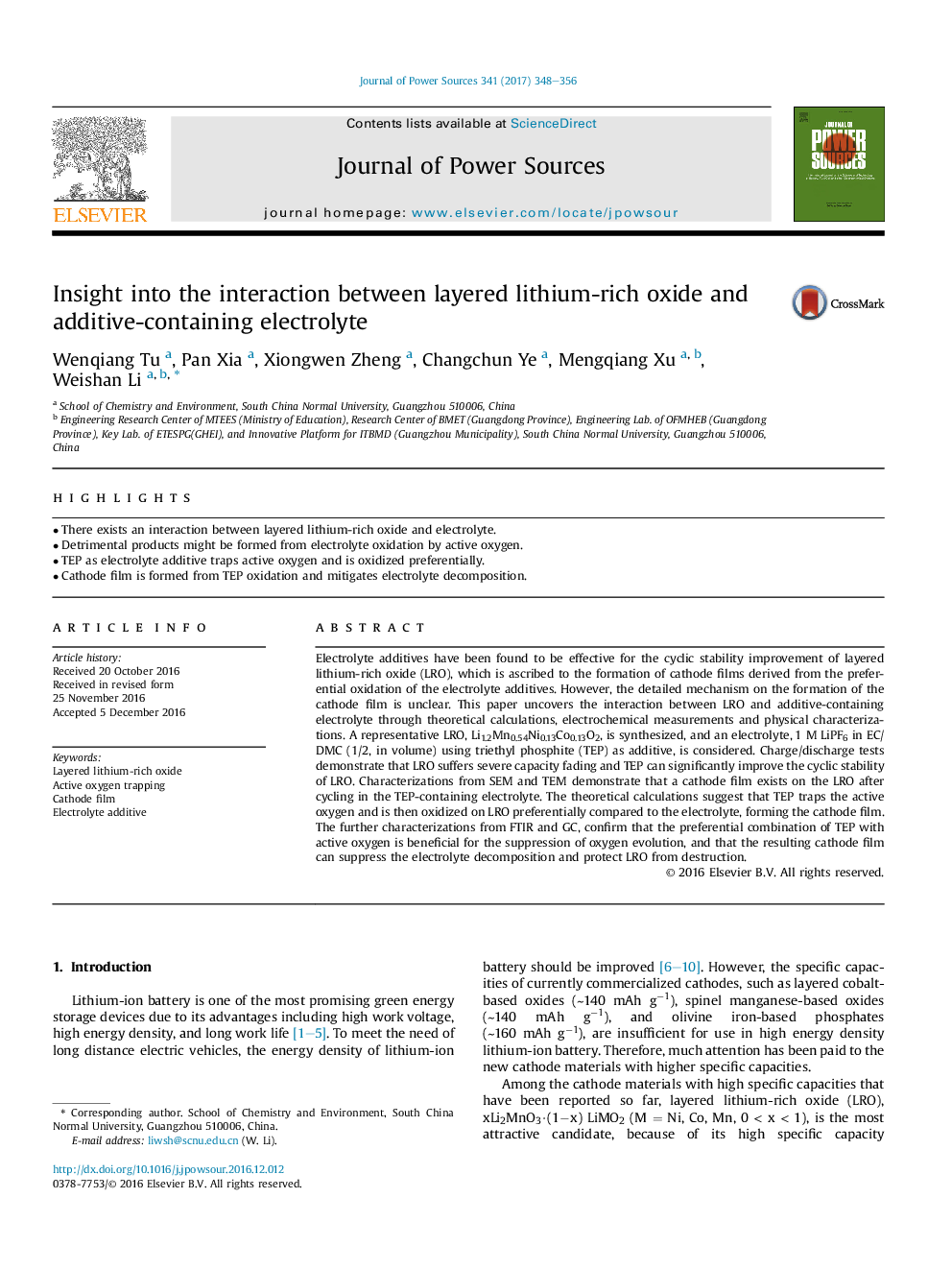| Article ID | Journal | Published Year | Pages | File Type |
|---|---|---|---|---|
| 5149759 | Journal of Power Sources | 2017 | 9 Pages |
Abstract
Electrolyte additives have been found to be effective for the cyclic stability improvement of layered lithium-rich oxide (LRO), which is ascribed to the formation of cathode films derived from the preferential oxidation of the electrolyte additives. However, the detailed mechanism on the formation of the cathode film is unclear. This paper uncovers the interaction between LRO and additive-containing electrolyte through theoretical calculations, electrochemical measurements and physical characterizations. A representative LRO, Li1.2Mn0.54Ni0.13Co0.13O2, is synthesized, and an electrolyte, 1Â M LiPF6 in EC/DMC (1/2, in volume) using triethyl phosphite (TEP) as additive, is considered. Charge/discharge tests demonstrate that LRO suffers severe capacity fading and TEP can significantly improve the cyclic stability of LRO. Characterizations from SEM and TEM demonstrate that a cathode film exists on the LRO after cycling in the TEP-containing electrolyte. The theoretical calculations suggest that TEP traps the active oxygen and is then oxidized on LRO preferentially compared to the electrolyte, forming the cathode film. The further characterizations from FTIR and GC, confirm that the preferential combination of TEP with active oxygen is beneficial for the suppression of oxygen evolution, and that the resulting cathode film can suppress the electrolyte decomposition and protect LRO from destruction.
Related Topics
Physical Sciences and Engineering
Chemistry
Electrochemistry
Authors
Wenqiang Tu, Pan Xia, Xiongwen Zheng, Changchun Ye, Mengqiang Xu, Weishan Li,
